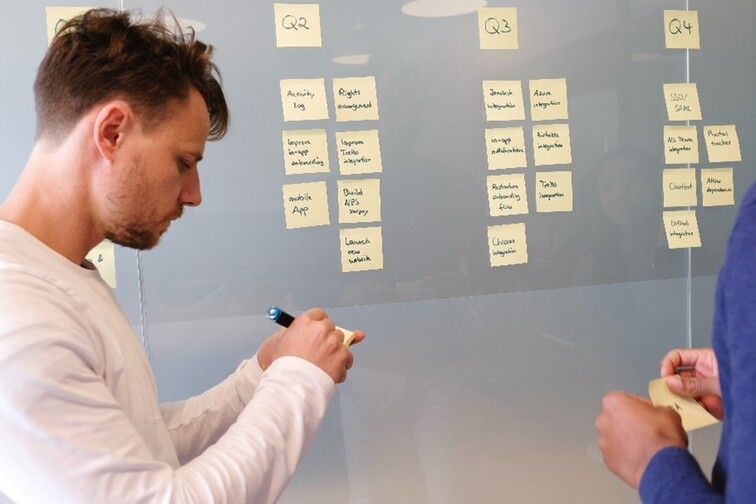Getting started on a new project feels exciting and stressful at the same time. But what should be your first step before initiating the project for it to be approved?
The approval process can be intimidating. You want to make sure that you have the right materials presented for you to succeed and one way to do that is to prepare a project charter.
Once created, the project charter serves as a kind of contract between the project sponsor and the project manager, giving a good overview of expectations and providing the project manager with the tools necessary to accomplish the desired outcome.
Does it sound complicated? Don’t worry, we’ve got you! Now let’s see what a project charter is really about.
What is a Project Charter?
Getting a project off the ground requires a variety of documentation such as project requirements, risk assessments, and project plans. But before everything, you need a project charter.
The project charter is a crucial part of the initiation process. It outlines the entirety of a project and states the scope, goals, and people who are participating in it. It defines the main stakeholders, the authority of the project manager along with roles and responsibilities of the other participants.
Key Elements and Benefits of a Project Charter
It gives the goals and objectives of the project and the plan to achieve these goals and objectives.
It provides a shared understanding of the project. It should communicate its value and/or reason for existence to everyone involved, from the team to the project manager, to the stakeholders, sponsors, etc.
It acts as a contract between the project sponsor, the key stakeholders, and the project team.
We’ve mentioned that it is an important step before initiating the project. But a project charter is also something you can return to throughout the lifecycle of your project to ensure that your work is consistent with the key objectives you set out to accomplish. If you are not sure whether something is steering you in the right direction or throwing you off course, your project charter serves as your north star, pointing you in the right direction consistent with your work.

What is Included in a Project Charter?: Project Charter Components
Projects differ in size, criticality, type, or approach. That’s why it is understandable to not have a precise definition of the actual contents of the template. However, the accepted principle in writing a project charter is that the document should have an answer to the following questions- What? Why? Who? When? Where?
Why?- Your Project's Purpose
Your project’s purpose should be summed up in one concise goal statement. Don’t forget to make it clear and specific because the right goal statement can set the tone for everything else!
What?- Your Project's Scope
You should go into detail and talk about what the project is supposed to achieve. You should clearly express what is being built, developed, or marketed.
Who?- Your Project Management Team
An important function of a project charter is to list who takes part in the project. This includes project managers, stakeholders, team members, and end-users who will be using the product or service.
Where and When?- Your Project's Schedule
You should specify any indicators of the schedule of events with the start and end dates.
Along with the answers to those questions, a project charter should also:
Give a budget or summary of how much the project will cost.
Talk about the benefits and the known high-level risks of the project.
Last but not least, state the requirements for approval, including what to approve, who approves, and how the approval can be obtained.

How Do You Create a Project Charter?
“Lack of direction, not lack of time, is the problem. We all have twenty-four-hour days,” says Zig-Ziglar and this quotation perfectly summarizes the value of a project charter. With that being said, let’s have a look at how you can create one!
1. State the Project Name, Information and Components
In this first section of your project charter, you should give general information about our projects, such as the name, description, and names of the project sponsor, project manager, team members, and stakeholders.
2. Define Roles and Responsibilities of the Project Team
An important function of a project charter is to document who your team members are and what their roles and responsibilities are. You should also identify key stakeholders. It is always important to know the stakeholders of a project, because they are the ones to whom you must report and, in a sense, meet their expectations.

3. Identify Project Goals and Project Objectives
It is important to distinguish between these two aspects. Project goals are the overarching benefits that the project is intended to deliver, while project objectives are the specific milestones or steps required to achieve them. If you do not have a clear goal, your project will miss the mark.
4. Propose a Business Case and Show the Benefits
Because it lays out the rationale for undertaking the project, a business case helps project managers explain what business needs the project will meet and what financial benefits and returns can be expected for project stakeholders. If you want to sell the project, you need to show the benefits it will bring and list them.
5. Create a Project Timeline
By creating a timeline, you show the key deliverables, milestones, and project phases so everyone involved in the project can see the big picture. While creating one, don’t forget that a project timeline is a simplified version of your project schedule!
6. Build the Project Budget and Resources
Here you want to give an approximate indication of the expected project cost. Set the budget for the project and determine who will have the spending authority. Add the estimated costs for the tasks you have defined, but keep in mind that new project requirements and tasks will require an adjustment to this budget.

7. Log The Most Important Project Risks
Identify all potential risks that could occur on the project so you are not caught off guard. Here, you should highlight the most likely or impactful risks so stakeholders can identify them early.
Following this, you should create a risk management plan, detailing how you will resolve these risks and who on the team is responsible for identifying and addressing them.
8. Define Requirements and Success Criteria for Project Deliverables
Project managers and stakeholders must agree on the success criteria. The most common aspects that determine project success are the triple constraint elements: time, cost, and scope.
Since the project charter is a key document in the early stages of a project, creating a good project charter lays the right foundation for the project and increases the likelihood that it will run smoothly in the remaining phases. To create a project charter you just need to keep in mind some other things:
Keep it brief: Try to keep the project charter simple and short. The more pages it contains, the less likely it is to be read.
Be precise: Try to get to the point as early as possible. Project sponsors and other stakeholders are busy professionals who may not be interested when reading a vague summary of a project.
Build it with your sponsor: The project charter is always better when the sponsor is involved, whether in the form of support or by actually co-authoring and reviewing the document.
Keep it somewhere close: You need to keep it in a central location where you, your project sponsors, and your project team can review it as needed.

Writing a Project Charter
A good project charter can set the course for your entire project, so take the time to get it right. Your project charter does not have to go into the smallest detail, but it should not be too general either. So, try to follow the SMART model while creating your project charter:
Specific
Provide enough detail so that there is no ambiguity about anything.
Measurable
Specify how progress will be defined.
Achievable
The tasks and end goal must be achievable given the schedule and available resources.
Realistic
Timelines and goals must be realistic.
Time-bound
Setting deadlines gives team members a clear idea of when they need to deliver and informs the client when to expect results.

Project charters are a must for project management. And time management is the top hand for the job. You want everything to be perfect when you are pitching your next project. With our user-friendly software, you, your team, and your unique projects can achieve the desired goal in a better way!
Discover more at BeforeSunset, and don't forget to check out other blogs for more project management tips and guides!
